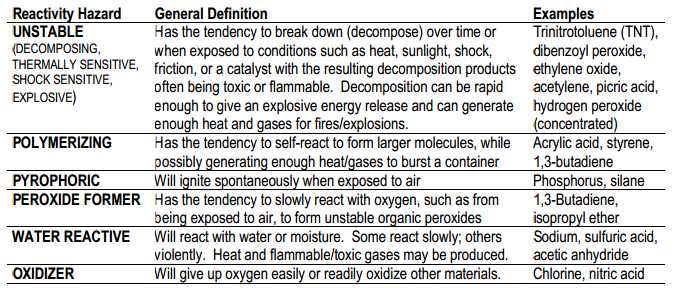Chemical reactivity has many different names, such as reactive materials, runaway reaction hazards, instability, thermal sensitivity, and incompatibility. Flammability, toxicity, and corrosion are also forms of reactivity. Since these topics are addressed elsewhere, our focus here will be on those reactions that fall outside the normal definitions of flammable or toxic and that generally occur far more rapidly than corrosion.
To decide if we handle reactive materials, we want to identify those materials that can cause a dangerous release, such as of heat, blast energy, toxic vapors, or gases that could rupture a container, when exposed to conditions that may reasonably occur in normal or abnormal situations. This step is sometimes called an intrinsic evaluation, as the information we are seeking relates to a property of the material itself.
Material Safety Data Sheets (MSDSs) are a good place to begin identifying reactive materials. You should have an MSDS from your supplier for every hazardous material you have on hand. While formats vary, there should be a section titled “Reactivity Data,” “Stability and Reactivity,” or similar, which outlines the material’s main reactivity hazards. This will not tell you everything you need to know, but it should give you an immediate warning of a major reactivity hazard associated with the material. Other clues may be found in MSDS sections dealing with fire fighting measures or explosion data.
Be aware that MSDSs for the same material but from different sources can vary considerably in what they report as hazards. For this reason, it is wise to consult multiple MSDSs and other sources before concluding that a material is or is not hazardous. In addition to MSDSs, there are many other readily available references that can provide similar information, often in more detail than the MSDS. Several are listed in the “Where Can I Get More Help?” section of this document, under Reactive Materials.
Here are some intrinsic reactivity hazards and their definitions. Incompatible materials will be considered in the next section of this document, as reactive interactions.

